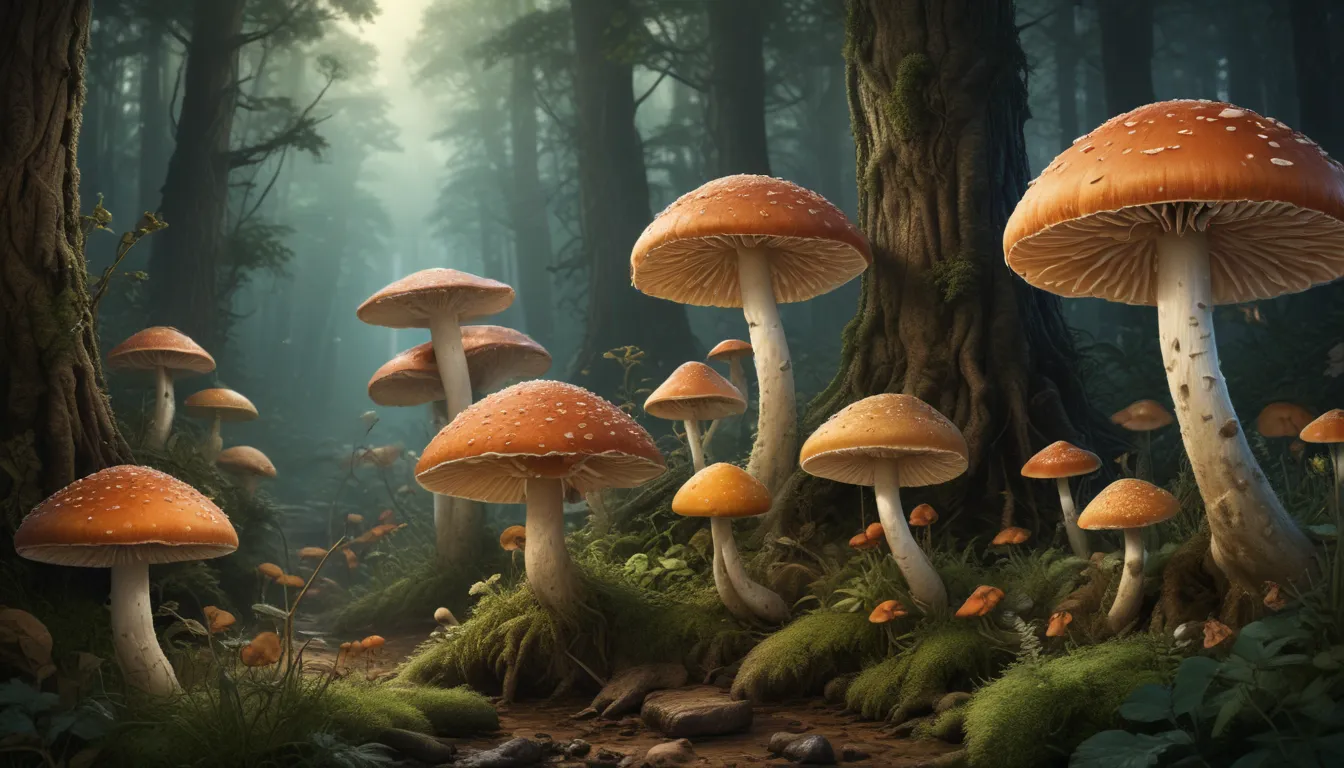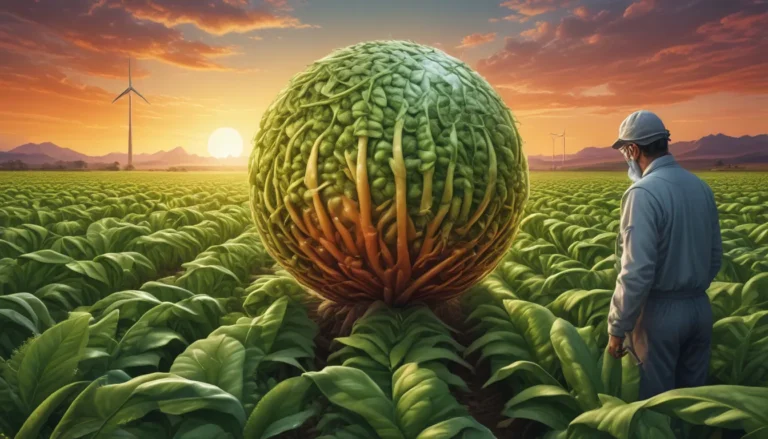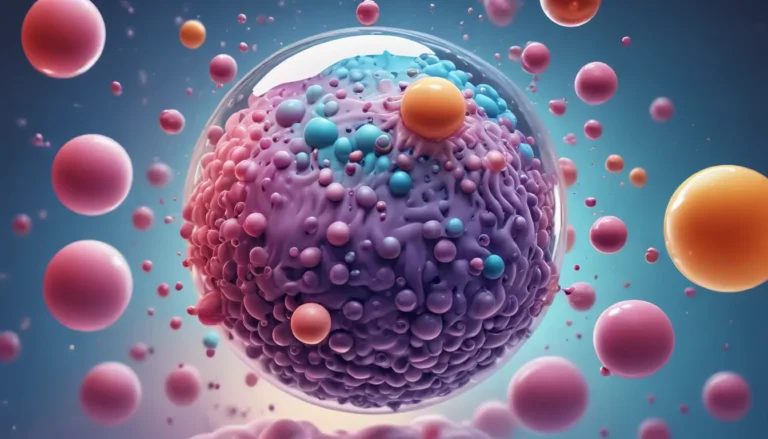A Note About Images: The images used in our articles are for illustration purposes only and may not exactly match the content. They are meant to engage readers, but the text should be relied upon for accurate information.
In the tapestry of nature, fungi stand out as enigmatic and often overlooked organisms with a treasure trove of astonishing facts waiting to be uncovered. These unique life forms, belonging to their own kingdom distinct from plants and animals, hold a myriad of secrets that not only fuel scientific curiosity but also offer practical applications in various fields. From their pivotal role in decomposition to their talent for producing life-saving compounds, fungi weave a fascinating narrative that enriches our understanding of the natural world. Join us on an exploratory journey as we unveil 11 remarkable facts about fungi that will captivate your imagination and deepen your reverence for these extraordinary organisms.
Unveiling the Hidden Marvels of Fungi
Fungi are incredible organisms that inhabit every nook and cranny of our planet, contributing significantly to the delicate balance of ecosystems. These versatile life forms come in diverse shapes and sizes, ranging from microscopic yeasts to towering mushrooms that command attention. Their ability to bioluminesce, forming a mystical glow in the dark, adds a touch of magic to the natural world. Beyond their aesthetic charm, fungi serve as indispensable players in the grand symphony of life, from cleaning up environmental pollutants through bioremediation to forging mutually beneficial relationships with other organisms. Let’s delve deeper into the wondrous realm of fungi and uncover the hidden marvels that await discovery.
Expanding Horizons: Fascinating Facts About Fungi
The Magnificent Honey Mushroom: A Living Giant
Did you know that the largest living organism on Earth is not a towering redwood or a majestic blue whale, but a fungus known as Armillaria ostoyae, or the honey mushroom? Spanning over 2,385 acres in the Malheur National Forest in Oregon, USA, this colossal fungus dwarfs conventional notions of size and age. Estimates suggest that this sprawling organism has graced the Earth with its presence for approximately 2,400 years, showcasing the resilience and longevity of fungal life forms.
Ubiquitous Fungi: In Every Nook and Cranny
From verdant rainforests to barren deserts, fungi have claimed their presence in every ecosystem on our planet. Their pivotal role in decomposing organic matter and recycling nutrients ensures the vitality of ecosystems, preventing stagnation and fostering renewal. Without fungi’s tireless efforts, the natural balance of our world would be thrown into disarray, underscoring their indispensable contribution to the tapestry of life.
The Vast Kingdom of Fungi: A Cornucopia of Diversity
While mushrooms often take center stage in discussions about fungi, they represent just a fraction of the vast fungal kingdom. With over 5 million estimated species, including molds, yeasts, and lichens, fungi display a staggering diversity that continues to astound scientists worldwide. Despite the description of approximately 120,000 species to date, the bulk of fungal diversity remains shrouded in mystery, beckoning exploration and discovery.
The Resilience of Fungi: Thriving in Adversity
Fungi stand out for their remarkable adaptability to extreme conditions, showcasing their resilience in the face of adversity. From enduring high temperatures and acidic environments to braving radiation and even thriving in outer space, fungi epitomize tenacity and survival skills. Their ability to thrive in hostile environments underscores the robust nature of these invaluable life forms.
Medicinal Marvels: Healing Powers of Fungi
For centuries, fungi have served as sources of medicinal compounds with profound therapeutic benefits. Certain fungal species produce antibiotic compounds that have revolutionized the field of medicine, leading to the development of life-saving drugs such as penicillin. The pharmaceutical industry continues to harness the healing potential of fungi, paving the way for innovative treatments and therapies that combat a myriad of diseases.
Symbiotic Symphony: Fungal Partnerships in Nature
Fungi are masters of forming symbiotic relationships with other organisms, showcasing their prowess in collaboration and mutual support. Mycorrhizal fungi, for instance, establish symbiotic ties with plant roots, facilitating nutrient uptake and enhancing plant growth. Similarly, lichens embody a harmonious union between a fungus and a photosynthetic partner, whether algae or cyanobacteria, highlighting the beauty of cooperation in nature’s intricate tapestry.
Illuminating the Dark: Bioluminescent Fungi
Some fungi possess the enchanting ability to bioluminesce, emitting soft, ethereal glows that cast a spellbinding aura in the nighttime landscape. Known as foxfire, this mesmerizing phenomenon enhances the enchantment of forests and woodlands, imbuing them with an otherworldly luminescence that captivates the beholder’s senses.
Culinary Delights: Fungi as Nutritious Treasures
Beyond their aesthetic and medicinal appeal, fungi offer a delectable array of culinary delights that enrich our diets with essential nutrients and flavors. Mushrooms and truffles, in particular, stand out as savory delicacies that are not only low in calories but also rich in fiber, vitamins, and minerals. Incorporating fungi into our meals adds a nutritional boost while tantalizing our taste buds with their distinctive textures and umami-rich profiles.
Gastronomic Enchantment: Fungi in Food Production
The culinary world owes a debt of gratitude to fungi for their indispensable role in the production of beloved food and beverage items. Whether fermenting cheese, leavening bread, or flavoring beer and wine, fungi contribute their unique enzymatic prowess to transform raw ingredients into delectable treats that tantalize our palates. Their ability to enhance flavors and textures elevates culinary creations and introduces a touch of gastronomic magic to our dining experiences.
Environmental Guardians: Fungi in Bioremediation
Fungi emerge as unsung heroes in the realm of environmental conservation, offering sustainable solutions to remediate polluted habitats and cleanse contaminated ecosystems. Through the process of bioremediation, fungi harness their enzymatic prowess to break down harmful pollutants, degrade pesticides, and eliminate heavy metals from soil, contributing to the restoration of ecological balance and the preservation of natural resources.
Embracing the Astonishing Tapestry of Fungi
As we navigate the enchanting world of fungi, a tapestry of wonder unfolds before us, showcasing the indelible mark these extraordinary organisms leave on our planet. From their ecological significance in nutrient cycling to their multifaceted roles in medicine, food production, and environmental stewardship, fungi embody a rich tapestry of diversity, resilience, and utility. By delving into the enigmatic world of fungi, we gain a newfound appreciation for the intricate web of life that sustains us and fuels our curiosity for further exploration and discovery.
In our journey through the captivating realm of fungi, let us pause to marvel at the intricate dance of life that unfolds in every mushroom, mold, and lichen we encounter. As we deepen our understanding of these remarkable organisms, may we draw inspiration from their adaptability, diversity, and symbiotic prowess, reflecting on the profound connections that bind all living beings in a grand tapestry of existence.
Nurturing Curiosity: FAQs on Fungi
- Are fungi plants?
-
No, fungi belong to their own distinct kingdom separate from plants. Unlike plants, fungi lack chlorophyll and cannot undergo photosynthesis.
-
Can all fungi cause diseases?
-
While certain fungi are pathogenic and can cause diseases in humans and other organisms, many fungi play beneficial roles in ecosystem dynamics and environmental health.
-
Are fungi used for medicinal purposes?
-
Yes, fungi have a long history of medicinal use, with some species harboring therapeutic compounds that show promise in treating various conditions, including cancer, infections, and autoimmune disorders.
-
How do fungi obtain nutrients?
-
Fungi function as heterotrophs, gaining nutrients by decomposing organic matter or entering into symbiotic relationships with other organisms to access essential resources.
-
Are all fungi visible to the naked eye?
- Not all fungi are visible without magnification, as many species are microscopic and require microscopy to observe their intricate structures and characteristics.
Illuminating Minds: Our Commitment to Authenticity
At the core of our endeavor lies a steadfast commitment to delivering credible, engaging content that sparks curiosity and fosters learning. Each fact embraced on our platform emerges from the collective wisdom and insights shared by real users like you, enriching our repository with a diverse tapestry of knowledge. To ensure the pinnacle of accuracy and reliability, our dedicated editors meticulously review each submission, safeguarding the integrity and authenticity of the information we share. Trust in our dedication to quality and veracity as you embark on a journey of discovery and enlightenment with us.
Dive into the enchanting realm of fungi, where every fact unveils a new layer of mystery and fascination, beckoning you to explore further. Whether you seek insight into fungal symbiosis with plants or wish to uncover the nuances of fungal biology, our rich tapestry of articles awaits your eager curiosity. Venture into the astonishing world of fungi with us, where wonder and knowledge intertwine in a captivating dance of discovery and enlightenment. The fungi kingdom awaits your exploration – embark on this extraordinary journey today!






